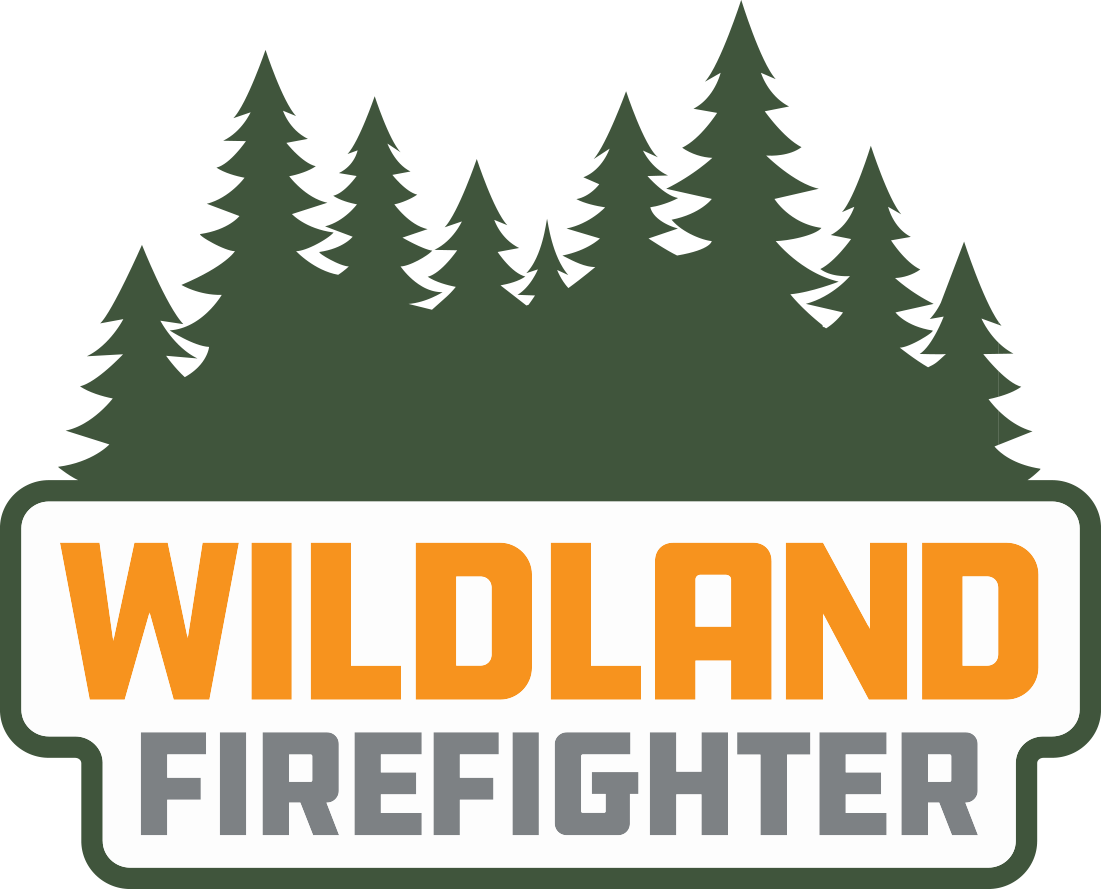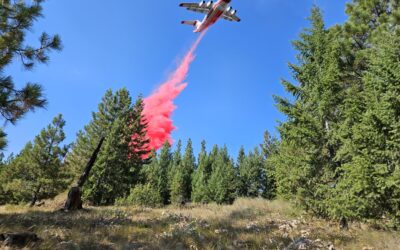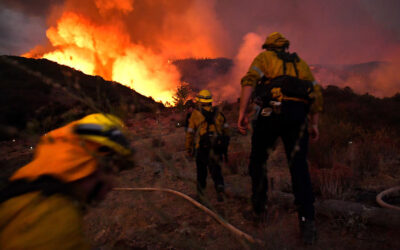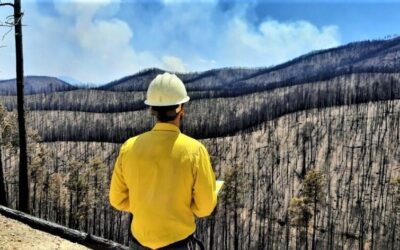Review these mission basics
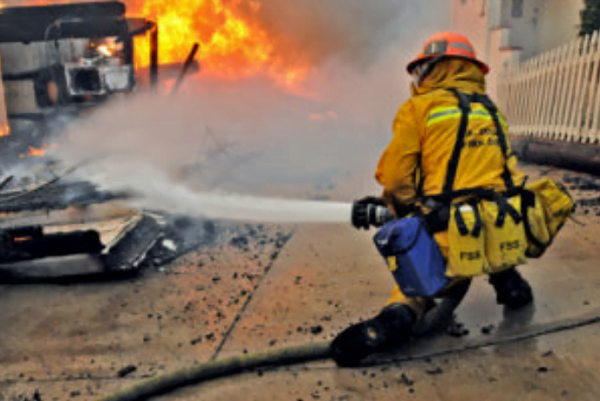
By Bill Troup, FireRescue Magazine Volume 8, Issue 3
Fighting fires in the wildland/urban interface (WUI) presents many unique challenges. Every year there are regular accounts of entrapments and other close calls, and WUI firefighting has resulted in many on-duty firefighter fatalities. As is the case in all aspects of firefighting, safety is the first priority in the WUI, and this commitment to safety is a joint responsibility among all firefighters, officers, chiefs and administrators. With this in mind, let’s review some basic safety tenets of fighting fires in the WUI.
Risk Management & Situational Awareness
Aggressive risk management is a primary means of maintaining safe wildland fire operations. There is a clear need to consistently evaluate fireline tactics and, if needed, adjust them as environmental and human factor conditions change. Situational awareness (SA) is a key component of risk management and must be maintained at all times. But what does this entail?
• Conduct SA briefings regularly (every 12 hours at a minimum) to brainstorm and consider specific ways in which you can increase awareness of the hazards you face.
• Maintain strong communications during all phases of operations. Brief incoming crews and other resources prior to becoming available for assignment and when arriving on scene.
• Evaluate the hazards involved with your activities and mitigate these hazards as much as possible in order to achieve the lowest level of risk for firefighters and others.
LCES
Lookouts, communications, escape routes and safety zones (LCES) must be established and maintained on every mission, including scouting, reconnaissance and patrol assignments. Rapid, unexpected changes in fire behavior during all phases of fire operations can kill wildland firefighters. As such, always identify the worst-case scenario, maintain focused SA, and, when necessary using your LCES, set realistic trigger points and withdraw when prudent.
Safety Equipment
Firefighters must always carry appropriate health and safety equipment, including a fire shelter. Training is critical so crews know when to properly deploy. Fire shelters and training materials can be ordered through the National Interagency Support Cache, the General Services Administration, the Federal Excess Personal Property (FEPP) Program or through a private vendor.
Trees & Terrain
Exercise extreme caution when working in timber canopy areas and around power lines. Assume that every tree has some level of hazard associated with it. Further, do not allow for a false sense of security in finer fuel types; many fatalities and entrapments have occurred in areas of fine and sparse fuels where terrain and wind produced unexpected, extreme fire behavior. Also, be aware of combustible materials on and around structures, such as roofs, woodpiles, decks and fences that may ignite and quickly spread to the surrounding area.
Health & Rehab
Carefully consider emergency medical planning for wildland firefighters, including Medevac. Further, ensure that all personnel are familiar with the hazards of fatigue and the need for effective rehabilitation. Ensure that EMS and rehab resources are available to support firefighters in a timely manner. Prevent dehydration, heat stress, hyperthermia and fatigue by constantly monitoring firefighters’ water and electrolyte intake. Dehydration and long work hours, coupled with poor air quality and high temperatures, all impact fatigue. As such, it is imperative to monitor personnel and provide rest opportunities.
It’s also important to remember that hydration alone may not be enough to prevent hyperthermia; firefighters should monitor core body temperature and take breaks in the shade or in an air-conditioned vehicle when needed. As the fire season remains active and wildland incidents become long-term events, be mindful of chronic fatigue and stress-related issues, and consider additional days off between assignments for personnel when necessary.
Vehicle Safety
Vehicle safety is a must. Drivers and passengers should always wear a seatbelt. Obey speed limits and stop at all red lights, stop signs, railroad crossings and wherever the driver does not have the right of way. Drivers should not exceed 10 hours of driving time. (Note: State commercial drivers licensing limitations may be more stringent.) Lastly, avoid driving between 2200 and 0500 HRS if possible, due to the combination of darkness and the potential for driver fatigue.
Additional Resources
Effective use of the Incident Command System is essential, especially because there are so many different types of resources used in WUI fire operations. Some online resources for wildland firefighter safety include:
• The IAFC Safety, Health, and Survival (SHS) Section: www.iafcsafety.org
• The Wildland Fire Policy Committee: www.iafc.org/wildland
• The National Wildland Coordinating Group (NWCG) Risk Management Committee: www.nwcg.gov/branches/pre/rmc/
• The U.S. Fire Administration (USFA) Wildland Firefighting Safety page: www.usfa.fema.gov/fireservice/subjects/wildfire/safetyinfo.shtm
• The National Institute for Occupational Safety and Health (NIOSH) Science Blog—Wildland Fire Fighting Health and Safety page: http://blogs.cdc.gov/niosh-science-blog/2012/07/wildlandfire/
• The NWCG Incident Response Pocket Guide (IRPG): www.nwcg.gov/pms/pubs/nfes1077/nfes1077.pdf
(Note: Pages 10–14 of the IRPG contains some specific direction on hazards and mitigations in the WUI.).
• The National Interagency Fire Center fire shelter: www.nifc.gov/fireShelt/fshelt_updates.html
• FEPP Program (with state contacts): www.fs.fed.us/fire/partners/fepp/
In Sum
It is essential to take the time to emphasize firefighter safety and appropriate risk management in the WUI. Let’s do everything in our collective power to return everyone home safely from these fires.
Author Note: Thanks to Larry Sutton of the U.S. Forest Service, the NWCG Risk Management Committee, and Corey Campbell, an occupational safety and health specialist at the National Institute for Occupational Safety and Health, for their contributions to this article.

